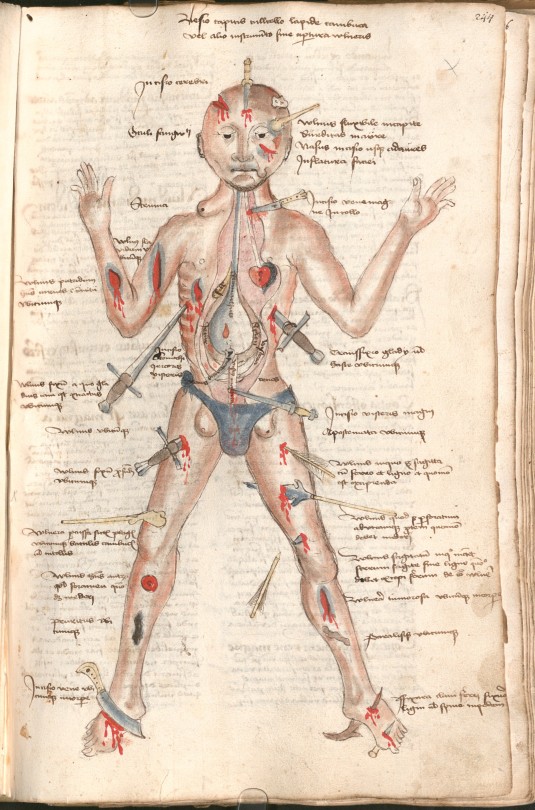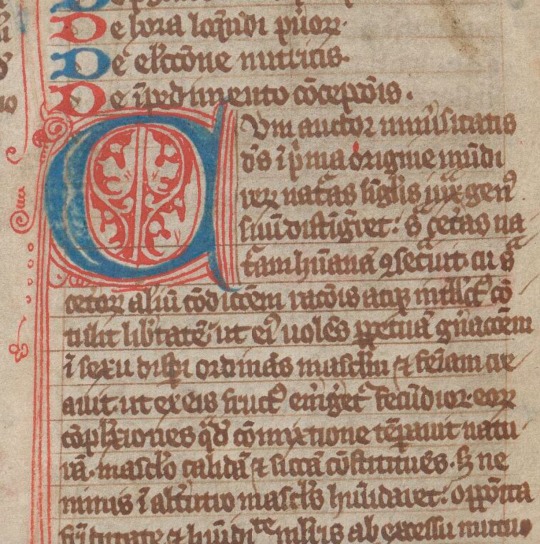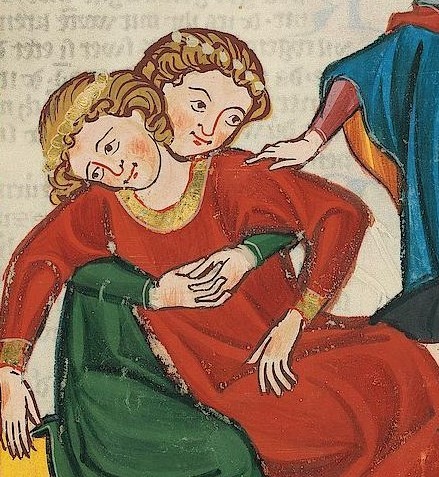#medieval medicine
Text
889 notes
·
View notes
Text

wundenmann (wound-man)
from a miscellany containing astronomical, astrological, and medical contents, bavaria/swabia, c. 1485
source: Munich, BSB, Cgm 597, fol. 244r
#btw (just bc i've seen the two get confused) he's different from the guy that shows every spot on the body for bloodletting#this is just a guy with every possible wound#15th century#wundenmann#wound man#wounds#medieval medicine#medical manuscript#medieval art
166 notes
·
View notes
Text
HRT would make total sense to a medieval (secular) doctor. “hmm yes your humours are unbalanced and thus your body masculinizes/feminizes in error. I must examine your sanguine humour through bloodletting”
#shitpost#trans#medievalposting#medieval medicine#medieval#traaaaaaannnnnnnnnns#lgbt#queer#transgender
286 notes
·
View notes
Photo

Imagine Alucard sitting down with Trevor and Sypha and going over the standard medical practices of the medieval period and explaining which ones are actually helpful and which ones are complete bullshit.
Sypha: Live worms tied around the neck for a sore throat?
Alucard: No.
Trevor: Diagnosis from urine?
Alucard: Yes and no. A urine sample will reveal certain illnesses given proper testing. Otherwise, the color of urine is really only good for determining whether or not you’re drinking enough water.
Sypha: Maggots.
Alucard: Maggots will actually eat away rotting, infected flesh, but if we observe actual sanitation practices, we won’t get to that point. Plus, sterile amputation procedures.
Trevor: What actually causes plague? Bad air, divine punishment, planetary misalignment?
Alucard: None of the above. It’s caused by bacteria. I’ll explain later.
Sypha: ...medicine administered via a clyster?
Alucard: Oh, for the love of...
#castlevania#Alucard Tepes#trevor belmont#Sypha Belnades#medieval medicine#medieval history#medieval europe#what's a clyster?#you don't wanna know
196 notes
·
View notes
Text

Joy, gladiator (IV)
uncensored version.
29 notes
·
View notes
Text
28 notes
·
View notes
Text
📚 Exciting manuscript alert! 🌟 Delve into the intriguing world of astrology and medieval medicine with this captivating German manuscript from 1443. 🌙✨ Explore its rich contents, including a calendar, treatises on zodiac signs and planets, and instructions on bloodletting and more! 📜🩺 #Astrology #MedievalMedicine
🔗 Check it out here: https://franklin.library.upenn.edu/catalog/FRANKLIN_9948425633503681
#Manuscript #Renaissance #AstrologyEarlyWorks #GermanTexts #MedievalMedicine
#medieval#manuscript#astrology#medicine#medieval medicine#renaissance#german#germany#history of medicine#book history#rare books
102 notes
·
View notes
Text
King Henry V was shot in the face with an arrow. Amazingly, not only did he survive being hit, but his surgeon managed to safely remove the arrow.
33 notes
·
View notes
Text
Squealing and freaking out throughout the passages about Arthur's death bc he dies of a head wound and I just read this post specifically about head trauma in Arthurian literature and now I have CONTEXT this is so cool you guys.
14 notes
·
View notes
Text

(Miscellanea Medica XVIII). MS.544 f.65 Beginning of the Trotula
Book of learned medical treatises with some additional practical texts
The Welcome Collection
8 notes
·
View notes
Text
It is time to unfuck our patient from that other humor poll!
(Because no, the humors are not supposed to be perfectly equal.)
Here are our numbers we are trying to get:
Blood: about 75%
Phlegm: about 19%
Yellow bile: about 5%
Black bile: about 1%
8 notes
·
View notes
Text
I had surgery last week to remove a mass on my back shoulder, right beside the shoulder blade. Quasimodo, as I had dubbed it, was the reason I haven't been actively fighting or shooting for the last while. It made it painful to shoot and impossible to wear my armor. Which was why he had to go. Taking up space and being a little unsightly? Sure, okay. Interfering with my hobbies? Well, we can't have THAT.
Anyway. I am now Quasimodo free with an almost three inch incision stitched and glued in a very active spot on my back, and am on week 2 of a 4-6 week movement and lifting restiction. I already popped a stitch from moving too much, so things are going well.
All of this is to say that I was thinking about what would have happened if I had lived during the time of my persona, the 13th century, and how it would have effectd my life. Would they have treated it like a boil, or recognized it as a tumor (as described in ancient greek writing)? Would I have just let it stay and lived with it when compared to the procedure or post-op care that was available?
We know that they knew about wound care in the middle ages. They knew how to soothe pain and improve healing, and had ways of avoiding infection. But voluntarily letting someone remove it knowing the risk? I don't know if I would have taken that route. I think I probably would have just lived with it and embraced my life as a spinster hunchback and thrived as best I could.
28 notes
·
View notes
Text


splinting a broken leg (and a lover's hug)
in the "codex manesse", zürich, c. 1300-1340
source: Heidelberg, UB, Cod. Pal. germ. 848, fol. 158r
#they're soo cute#14th century#codex manesse#medieval art#medieval medicine#hugs#illuminated manuscript
324 notes
·
View notes
Text
Medical Monday: The “everlasting pill”
Throughout history many things were used to treat ailments, some good ideas and others- the complete opposite. Its no secret that it was a common practice to experiment with different metals, and antimony is today’s hot topic.
The everlasting pill, used during the Middle Ages and grew in popularity in the ninteenth century- was a small metalic pill people took when they fell ill, in the hopes to “clean out” the body and purge the humors. The point of this pill was once it was consumed, it would induce vomiting and diarrhea. The “everlasting” name was given because it was meant to be retrieved once it exited the body, cleaned and re-used. This little metal ball would also be passed down to future generations like a family heirloom.
But it’s no surprise antimony is not safe to consume, the reason it caused the symptoms was due to its poisonous effects. It wasn’t a miracle product, the body was trying to remove a dangerous material from itself. Also, there’s a belief that the great Mozart actually died from constant antimony usage- though there are many different possibilities that caused the death of the renowned composer.
Sources: Everlasting Pill, Antimony: It might have killed Mozart, Kill or cure: Victorian remedies
#medical monday#mourningcrypt#odd medicine#odd medical history#old medicine#old medical practices#everlasting pill#victorian medicine#middle ages medicine#medieval medicine#antimony pill
2 notes
·
View notes
Text
this has certainly been said before, and more intelligently i’m sure, but i’m struck this morning by the similarities btwn ancient & medieval humoral medicine and modern popular “detox” & diet culture
#grad school is wild#welcome to hey hey it's diss days where it's never the weekend#personal#medieval medicine#humoral medicine#diet culture
23 notes
·
View notes
Note
Is there anything in the historical record to suggest a greater prevalence of CTE in knights or other professional soldiers than civilians? Knights must have been smashing each other in the head all the time when training
Thats a very good question.
They would certainly be at higher risk, both given the nature of military training and the common pastime of jousting at tourneys.
And certainly in battle, head injuries were a known risk and considered some of the most serious that a medieval doctor would have to deal with, given their limited options for treatment.
What is noticeable from the record is that most records of injury and treatment involve severe head injuries, often ones that required quite risky brain surgery but also serious concussions were something that medieval doctors recognized - which suggests that the lower-force repeated impacts so characteristic of CTE might have flown under the radar.
15 notes
·
View notes